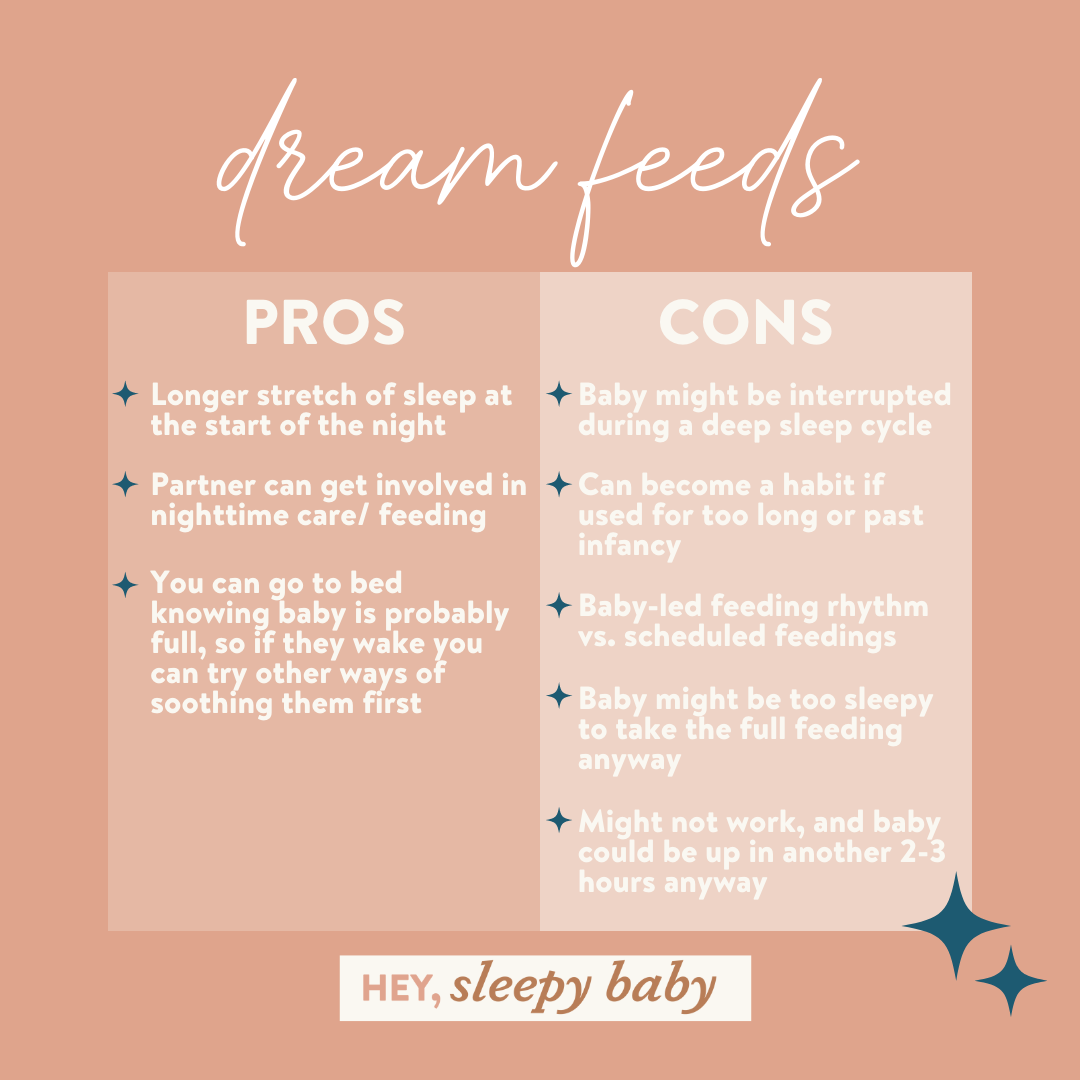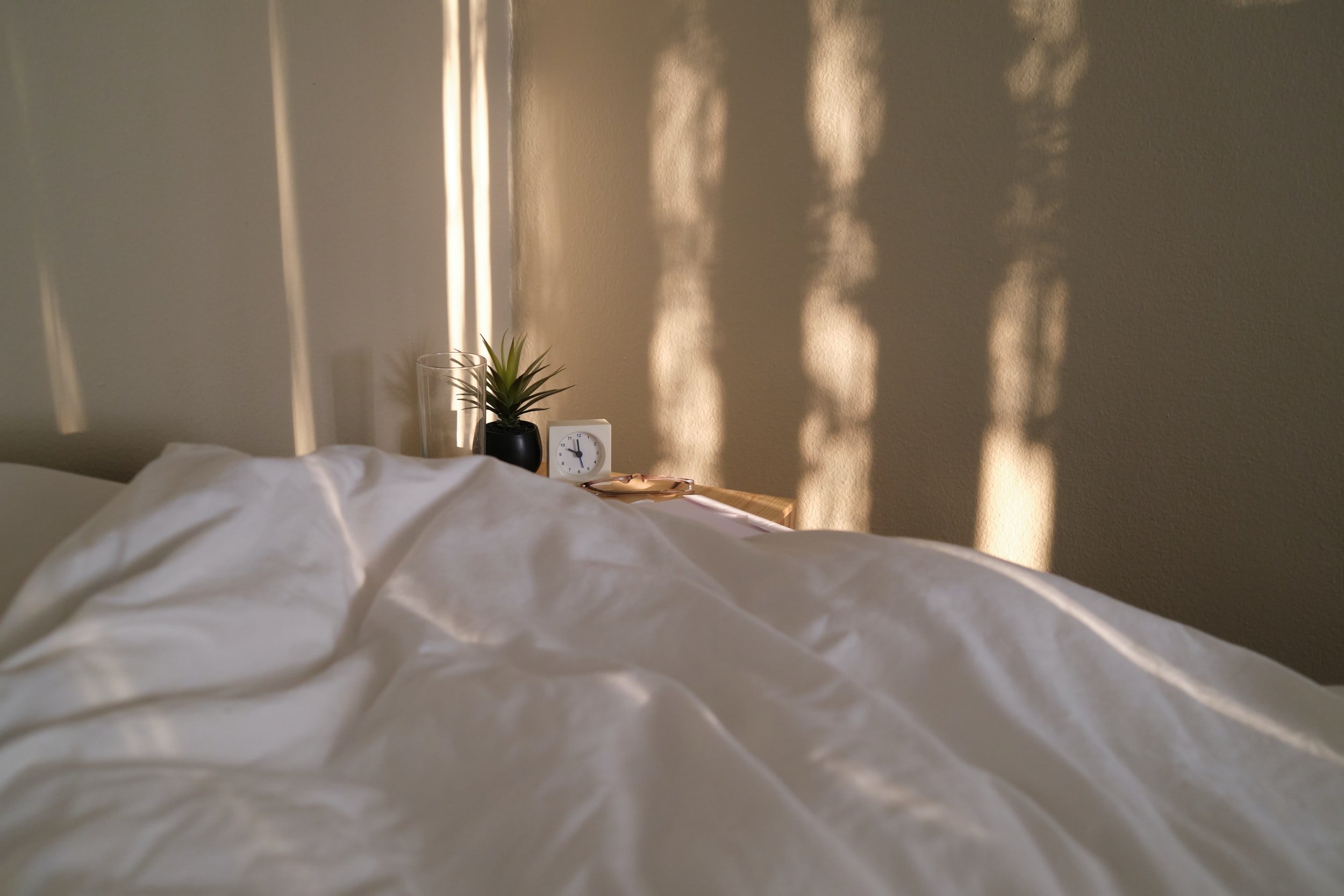What is a “dream feed” for babies anyway?
A “dream feed” is simply a feeding offered to your baby while they are still asleep, usually shortly after bedtime or before the first wakeup.
The idea is that a dream feed “tops off” your baby’s hunger tank right before the parents go to sleep, so that ideally they’ll get a good chunk of sleep at the start of the night, before baby wakes to feed again. Most babies will be harder to rouse in the earlier half of the night, whereas in the early morning hours it can be harder for them to stay asleep through the feed. A good time to offer a dream feed would be around 10pm.
How do I do it?
Before you decide to start dream feeding, if there is any concern with your baby’s weight or your milk supply, check in with an IBCLC to see if this is a good strategy for you.
To accomplish a dream feed, pick up your baby from their sleep space (or roll towards them and assume side-laying nursing position if you’re bed sharing) and get into your normal or most comfortable feeding position or hold. Next, gently offer your nipple or the bottle by placing it on her bottom lip. She should lightly rouse and start to instinctively suckle.
If your baby is slow to suck or stops because they’re too sleepy, you might encourage them to keep going by lightly tickling their foot, softly blowing on their face, or stroking their cheek.
No need to burp baby after a dream feed- unless you want to! Also no need to do a diaper change unless it’s dirty. If you do want to include a change, try and keep lighting low, and do it BEFORE the feeding so that baby can fall back to sleep at the breast/bottle.
When the feeding is done, place baby back into their sleep space.
Why do parents dream feed?
Parents may choose to offer a dream feed in an attempt to get a longer stretch of sleep at the start of the night. A dream feed is also a way of getting an extra feeding in if your baby hasn’t been eating as much during the day, potentially due to heightened distractibility or starting at child care.
A dream feed is also a great way to get your partner/ coparent involved in nighttime care if you’ve introduced bottles, and this can get you a bit more sleep. In the early weeks and months, you may pump much more quickly than a nursing session typically lasts. That means you can pump a bottle, hand it off, and get right back to sleep! If you want to EBF, you can nurse baby right before you go to bed (assuming baby has already gone to bed), so that you get a longer period of sleep before she wakes for another feeding.
If you’re formula feeding, a dream feed works for the same reasons as above. You’re essentially offering a preemptive feeding, staving off the next waking for a little while because they’re now satiated.
Are dream feeds the way to go? It depends! A dream feed can work well for lots of families and different situations. There’s almost no data on whether or not dream feeds are actually effective or not- so most advice you’ll see is just anecdotal. There are pros and cons, as with anything.
So…will it help?
Maybe… maybe not! It’s important to remember that nighttime waking and feeding in the first year (and even beyond!) is entirely normal. While dream feeds might be a good short-term solution for your family in the early weeks and months, I wouldn’t count on it to be the magic bullet that gets your little one sleeping through the night before they’re ready.
How to stop dream feeding
If you want to stop the dream feed, you can gradually reduce either the time you’re nursing or the ounces you’re offering in the bottle little by little over the course of a few nights. You may choose to continue pumping instead if you want to keep your supply up or build a freezer stash. Again, there’s not any hard evidence that dream feeds are effective at getting a longer stretch or sleep for your baby, so there’s nothing to lose by weaning off of them. If you are looking for more support with your baby, Newborn Masterclass which is the essential baby sleep course for new + expecting parents and will have more information on dream feeds, plus much more!
Was this helpful? Save it for later!








